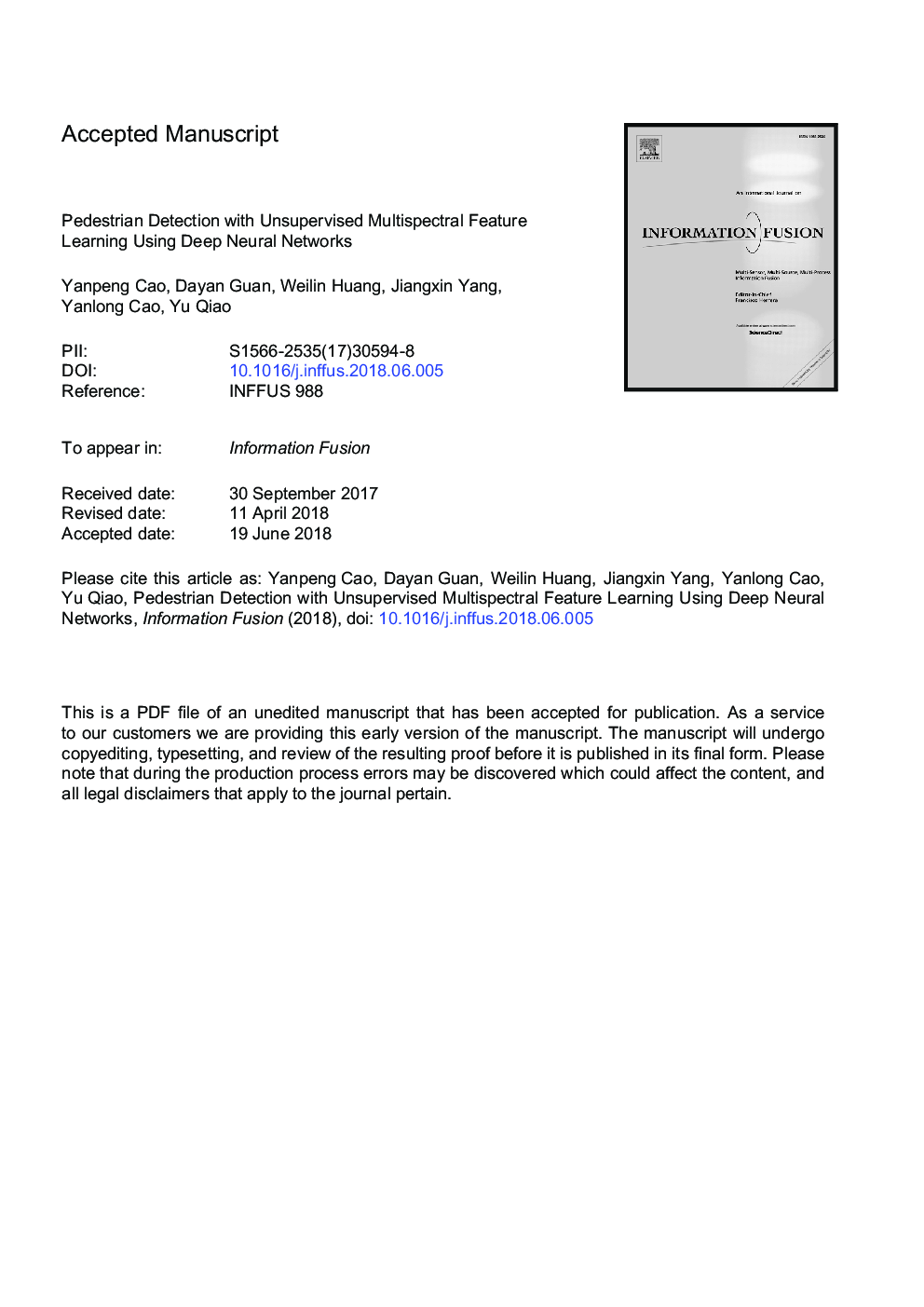| Article ID | Journal | Published Year | Pages | File Type |
|---|---|---|---|---|
| 6937854 | Information Fusion | 2019 | 15 Pages |
Abstract
Multispectral pedestrian detection is an important functionality in various computer vision applications such as robot sensing, security surveillance, and autonomous driving. In this paper, our motivation is to automatically adapt a generic pedestrian detector trained in a visible source domain to a new multispectral target domain without any manual annotation efforts. For this purpose, we present an auto-annotation framework to iteratively label pedestrian instances in visible and thermal channels by leveraging the complementary information of multispectral data. A distinct target is temporally tracked through image sequences to generate more confident labels. The predicted pedestrians in two individual channels are merged through a label fusion scheme to generate multispectral pedestrian annotations. The obtained annotations are then fed to a two-stream region proposal network (TS-RPN) to learn the multispectral features on both visible and thermal images for robust pedestrian detection. Experimental results on KAIST multispectral dataset show that our proposed unsupervised approach using auto-annotated training data can achieve performance comparable to state-of-the-art deep neural networks (DNNs) based pedestrian detectors trained using manual labels.
Related Topics
Physical Sciences and Engineering
Computer Science
Computer Vision and Pattern Recognition
Authors
Yanpeng Cao, Dayan Guan, Weilin Huang, Jiangxin Yang, Yanlong Cao, Yu Qiao,
